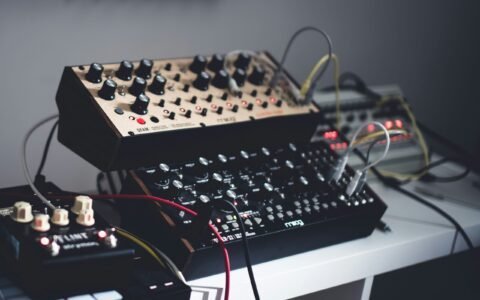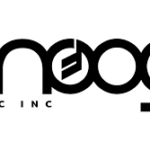
Welcome to the world of synthesizers! In this mini book, we will take you on a fascinating journey through the history, makes, timelines, and popular models of this incredible music instrument. Whether you are a musician, a music enthusiast, or simply curious about the evolution of electronic music, this guide will provide you with a comprehensive overview of the synthesizer.
The Birth of the Synthesizer
The synthesizer, often referred to as the “synth,” emerged in the mid-20th century as a groundbreaking instrument that revolutionized music production. It was developed to generate and manipulate electronic signals to create a wide range of sounds.
One of the earliest pioneers in the field was Dr. Robert Moog, who introduced the Moog synthesizer in the 1960s. This modular synthesizer became a game-changer, shaping the sound of popular music for decades to come. Other notable early makes include the Buchla synthesizer and the EMS VCS3.
The Evolution of Synthesizers
As technology advanced, synthesizers became more compact, affordable, and accessible to musicians. In the 1970s, the introduction of polyphonic synthesizers, such as the Yamaha CS-80 and the ARP Odyssey, allowed musicians to play multiple notes simultaneously.
The 1980s witnessed a surge in the popularity of synthesizers, with iconic models like the Roland Jupiter-8, the Sequential Circuits Prophet-5, and the Yamaha DX7. These instruments played a vital role in defining the sound of the era, from the lush pads of the Jupiter-8 to the iconic FM synthesis of the DX7.
Modern Synthesizers
In recent years, synthesizers have experienced a renaissance, with a resurgence of interest from musicians, producers, and even hobbyists. Today, there is an extensive range of digital and analog synthesizers available, catering to diverse musical preferences.
Popular modern synthesizer makes include the Dave Smith Instruments Prophet-6, the Korg Minilogue XD, and the Moog Subsequent 37. These models combine the best of both worlds, offering the warmth and character of analog circuitry with the flexibility and convenience of digital control.
Timelines and Milestones
The timeline of synthesizer development is marked by significant milestones. In the 1960s, the Moog synthesizer laid the foundation for future advancements. In the 1970s, the introduction of polyphonic synthesizers expanded the possibilities for musicians. The 1980s saw the rise of digital synthesis and the birth of iconic models.
In the 1990s and early 2000s, software synthesizers gained popularity, allowing musicians to create electronic sounds using virtual instruments. This era also witnessed the emergence of hardware workstations, such as the Korg Triton and the Roland Fantom, which combined synthesizer capabilities with sequencing and sampling.
The Impact of Synthesizers
Synthesizers have had a profound impact on the world of music. They have shaped genres like electronic, pop, and even classical music. From the iconic bass lines of the Moog synthesizer in funk and disco to the atmospheric textures of ambient music, synthesizers have become an essential tool for musicians and producers.
Moreover, synthesizers have paved the way for innovation in sound design and music production. They have expanded the sonic palette available to artists, allowing them to create unique and experimental sounds that were previously unimaginable.
Conclusion
The synthesizer has come a long way since its inception, evolving from large modular systems to compact and powerful instruments that fit in the palm of your hand. Its influence on music cannot be overstated, and it continues to shape the soundscape of contemporary music.
Whether you are a seasoned musician or a curious beginner, exploring the world of synthesizers is an exciting adventure. So, grab your headphones, fire up your favorite synthesizer, and let your creativity soar!





